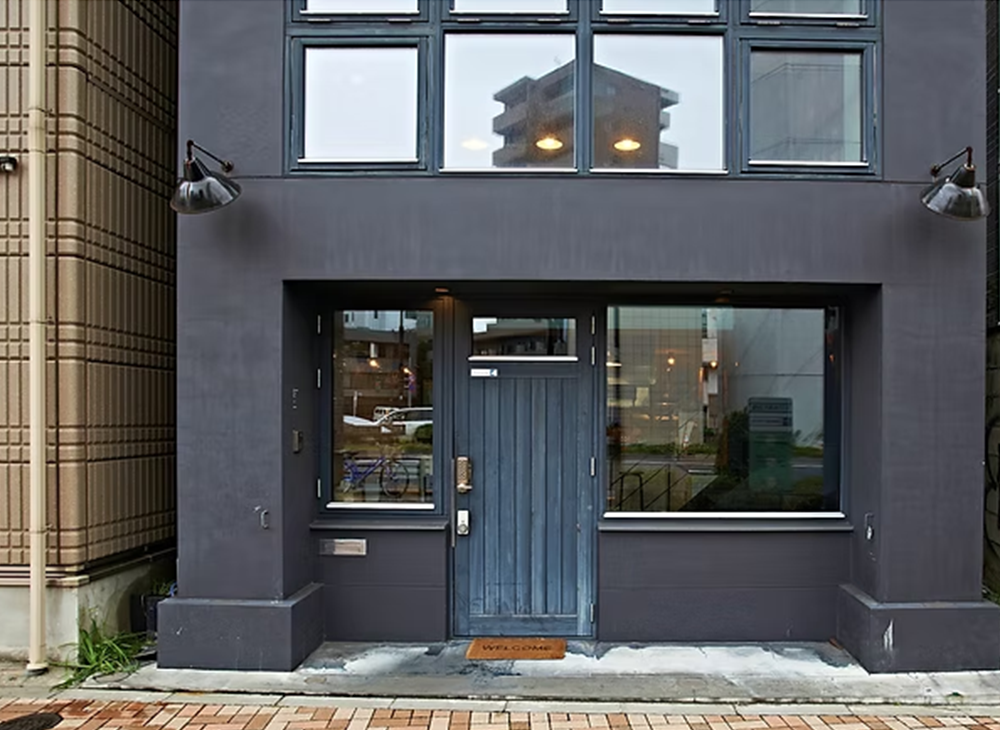
The Typeface Notebook is a uniquely designed notebook that incorporates vintage wooden type from England into its design. Various Japanese printing and bookbinding techniques come together to create this one-of-a-kind product. The inner pages are printed in-house using "RISO," a Japanese-originated printing method, while the binding is handled by a long-established bookbinding company in Bunkyo Ward.
This notebook features a luxurious cloth-bound hardcover with two ribbon bookmarks, embodying meticulous attention to detail. Each page is individually numbered from 1 to 365—a design element made possible only through hand-production. By merging historic Western typography with Tokyo-based design and Japanese craftsmanship, this notebook achieves a truly original aesthetic.
With its distinctive fusion of eras and cultures, the Typeface Notebook holds a unique charm that resonates not only in Japan but also among visitors from around the world. As letterpress printing becomes increasingly rare globally, we integrate Japan’s advanced printing techniques to reintroduce this art form from Tokyo as a new wave of design innovation.
This notebook features a luxurious cloth-bound hardcover with two ribbon bookmarks, embodying meticulous attention to detail. Each page is individually numbered from 1 to 365—a design element made possible only through hand-production. By merging historic Western typography with Tokyo-based design and Japanese craftsmanship, this notebook achieves a truly original aesthetic.
With its distinctive fusion of eras and cultures, the Typeface Notebook holds a unique charm that resonates not only in Japan but also among visitors from around the world. As letterpress printing becomes increasingly rare globally, we integrate Japan’s advanced printing techniques to reintroduce this art form from Tokyo as a new wave of design innovation.
Philosophy & Vision
Design with Timeless Wood Types

Hosoyamada Design Office is a creative letterpress studio based in Tomigaya, Shibuya. We craft design goods using rare alphabetic wooden type, harnessing the natural imperfections, scratches, and textures unique to vintage wooden letters. These details create a depth that cannot be replicated digitally.
Beyond our original products, we also host regular workshops where participants can print posters and business cards using traditional letterpress techniques. Through these activities, we aim to share the rich appeal of letterpress printing with a wider audience.
Beyond our original products, we also host regular workshops where participants can print posters and business cards using traditional letterpress techniques. Through these activities, we aim to share the rich appeal of letterpress printing with a wider audience.
Creator's Commitment
From "Kiss Touch" to the Art of Shadows

Traditionally, letterpress printing values a "kiss touch"—a gentle pressure that avoids deep impressions to ensure the reverse side of the paper remains unmarked. More recently, the essence of letterpress has come to be recognized in the interplay of light and shadow formed by pressure, the individuality of each print’s coloration, and, most strikingly, the subtle tactile irregularities that give every print its distinctive character. Letterpress printing involves assembling type, mixing inks, and feeding each sheet of paper by hand, ensuring a unique and carefully crafted result.
At Hosoyamada Design Office, we work with three primary typefaces: "Gill Sans," "Bodoni," and "Futura," all of which are printed using vintage wooden type. Each typeface is printed with care, and the cover of our notebooks includes a specimen sheet showcasing the typography used—a delightful detail for typography enthusiasts.
The paper is chosen to prevent ink from bleeding through, making it ideal even for fountain pens. Each page features large, lightly printed numbering and dot grids, allowing for both writing and sketching with ease.
At Hosoyamada Design Office, we work with three primary typefaces: "Gill Sans," "Bodoni," and "Futura," all of which are printed using vintage wooden type. Each typeface is printed with care, and the cover of our notebooks includes a specimen sheet showcasing the typography used—a delightful detail for typography enthusiasts.
The paper is chosen to prevent ink from bleeding through, making it ideal even for fountain pens. Each page features large, lightly printed numbering and dot grids, allowing for both writing and sketching with ease.
Access


